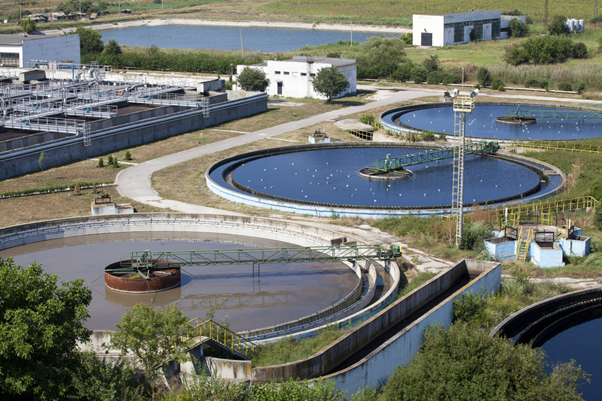
Bring up wastewater treatment and you are likely to find yourself alone at a cocktail party. This is unfortunate because if your listeners could get past the idea of human waste, what they would learn is advanced wastewater treatment is not just one treatment – it is actually three – and entails some remarkable advances in science. (Note: this article is indebted to the web article “What is Advanced Waste Water Treatment?”)
Tertiary treatment
One of three types of advanced wastewater treatment is tertiary treatment. Broadly defined, tertiary treatment involves the use of additional treatment operations following conventional secondary treatment of wastewater. Tertiary treatment may be limited to the introduction of additional filtration or may be more complex. Complex additions are necessary for the removal of nitrogen or phosphorous.

Physical-chemical treatment
As its name implies, this treatment involves the combination of biological and chemical agents to produce the treated waste or effluent that reaches discharge site (such as the ocean).
Combined biological-physical treatment
What differentiates this treatment regimen from tertiary treatment is any additional processes in tertiary treatment are added after secondary treatment; in combined biological-physical treatment, the treatment agents are mixed and introduced at the time of treatment.
The goals of advanced wastewater treatment
Aside from human waste, treatment removes other dangerous elements from wastewater. To this end, advanced wastewater treatment removes the following:
- Organic and suspended solids
- Nitrogenous oxygen demand (NOD)
- Nutrients
- Toxic materials
Other benefits of advanced wastewater treatment are:
- The effluents produced by advanced wastewater treatment may be recycled directly, thereby increasing domestic water supply
- These effluents can be used in industrial settings
- Secondary treatment does not always remove enough pollutants for the receiving water to withstand
- Secondary treatment does not always remove the desired amount of organic pollutants
Aerobic digestion of sludge
There is a great amount of sludge in wastewater/sewage treatment plants. Operators of these plants deal with sludge by utilizing a process that removes or digests the matter aerobically. Typically, these plants are sludge activation plants and they process the sludge in chambers or tanks known as digester tanks. Sludge activation plants often run more than one digester tank at a time.
Aerobic digestion of sludge has its benefits and detriments when compared to anaerobic digestion of sludge. One of the benefits of aerobic digestion of sludge is it is lower capital costs than anaerobic digestion. It is also a faster process. One of the disadvantages is the operating cost of aerobic digestion of sludge is higher than anaerobic. However, recent technological advances have lowered the operating cost of aerobic digestion.







